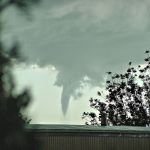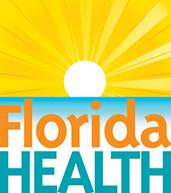It's a New Day in Public Health.
The Florida Department of Health works to protect, promote, and improve the health of all people in Florida through integrated state, county, and community efforts.
Tornado Safety and Preparedness
Contact: Florida Health
- 850-245-4444
- health@flhealth.gov
-
Mailing Address
Florida Health
4052 Bald Cypress Way
Tallahassee, FL 32399
Stay Prepared, Stay Safe: Your Guide to Tornado Preparedness
 Tornadoes are unpredictable, making it essential to be prepared. This guide covers key steps to take before, during, and after a tornado to ensure your safety and help you recover afterward. Learn how to identify risks, set up emergency plans, and gather supplies in advance. Find out how to take immediate shelter during a tornado, stay informed during the event, and assess damage afterward. With practical tips and useful resources, this information can help you stay safe and informed throughout every stage of a tornado's impact.
Tornadoes are unpredictable, making it essential to be prepared. This guide covers key steps to take before, during, and after a tornado to ensure your safety and help you recover afterward. Learn how to identify risks, set up emergency plans, and gather supplies in advance. Find out how to take immediate shelter during a tornado, stay informed during the event, and assess damage afterward. With practical tips and useful resources, this information can help you stay safe and informed throughout every stage of a tornado's impact.
- How can I prepare before a tornado?
- What do I do during a tornado?
- What to do after a tornado?
- Resources and Information
Know the Risk:
- Tornadoes can happen any time of year but are most common in spring and summer.
- Florida’s tornado season peaks from February to May but be alert year-round.
Be Prepared:
- Identify a safe room in your home, such as a basement, interior room, or hallway on the lowest floor, away from windows.
- Create a family emergency plan: establish communication methods and meeting points if separated.
- Assemble an emergency kit with essentials like water, non-perishable food, flashlights, batteries, a first aid kit, and important documents.
- Stay informed by monitoring weather updates via local news, NOAA Weather Radio, or weather apps for real-time warnings.
Seek Shelter Immediately:
- Head to your pre-designated safe space. In a building, move to the lowest level, away from windows and exterior walls. If possible, go to a basement or interior room.
- If outside and shelter is unreachable, lie flat in a low-lying area such as a ditch. Protect your head and neck with your arms.
Mobile Homes and Vehicles:
- Mobile homes are unsafe during tornadoes. Seek shelter in a nearby sturdy building.
- Avoid attempting to outrun a tornado in a vehicle. If no safe shelter is accessible, leave your car and find a low-lying area to lie down in.
Stay Informed:
- Stay tuned to tornado warnings and watches from the National Weather Service (NWS).
- Tornado Watch: Conditions are conducive for tornadoes.
- Tornado Warning: A tornado has been spotted or detected by radar. Take immediate shelter.
Stay Safe:
- Assess yourself and others for injuries. Administer first aid if needed, and immediately call 911 for serious injuries.
- Steer clear of collapsed buildings and downed power lines to avoid electrocution or further harm.
- Be cautious when navigating through debris or damaged areas, as sharp objects, unstable structures, or hazardous materials may be present.
Stay Informed: - Keep monitoring local news, weather broadcasts, or NOAA Weather Radio for important updates. Additional storms or hazards may follow.
Report Damage:
- Alert local authorities about hazardous situations, such as fallen power lines, gas leaks, or water main breaks.
- Document all damage to your property, including photos, to assist with insurance claims and recovery efforts.
- Ready.gov: Tornadoes - Offering key tornado safety tips, including preparation steps, emergency planning, and how to stay informed. Learn what to do before, during, and after a tornado to protect yourself and your family.
- Tornado Preparedness: Red Cross Guide - The American Red Cross provides valuable information on how to prepare for tornadoes, including essential safety tips, emergency supplies, and steps to take before, during, and after a tornado.
- Tornado Education Resources by NOAA - Explore educational materials and resources from NOAA to deepen your understanding of tornadoes, their formation, and how to stay safe during these extreme weather events.
- FEMA Tornado Data and Resources - Access vital tornado data, maps, and resources from FEMA to better understand and prepare for tornado risks. This platform offers up-to-date information on tornado activity, alerts, and recovery efforts.
- OSHA: Tornado Preparedness and Response - Learn essential tornado preparedness and response strategies for businesses and workers, including emergency plans, safety measures, and resources to handle the aftermath of a tornado.
- Tornadoes: Preparedness and Safety from the CDC - How to stay safe before, during, and after a tornado with essential information and guidelines from the CDC.
- Mental Health and Tornado Preparedness - Learn about the mental health impacts of tornadoes and find resources for coping with the emotional aftermath.
Tornado Safety: Prepare, Protect, and Stay Informed
Being prepared for a tornado is the best way to protect yourself and your loved ones. By taking proactive steps before, during, and after a tornado, you can reduce risk and help ensure your safety. The resources and guidelines provided here are designed to help you understand the necessary actions to take in these critical moments. Stay informed, stay vigilant, and always have a plan in place to navigate through the challenges tornadoes may bring. For more in-depth information, explore the available resources and stay prepared.
Disclaimer: The links and content provided on this page are for informational purposes and your convenience. The Florida Department of Health (DOH) does not endorse, approve, or guarantee the products, services, or opinions offered on external websites. Furthermore, the DOH is not responsible for the accuracy, content, or availability of these external sites. For questions or concerns, please contact the external site directly.



Connect with DOH